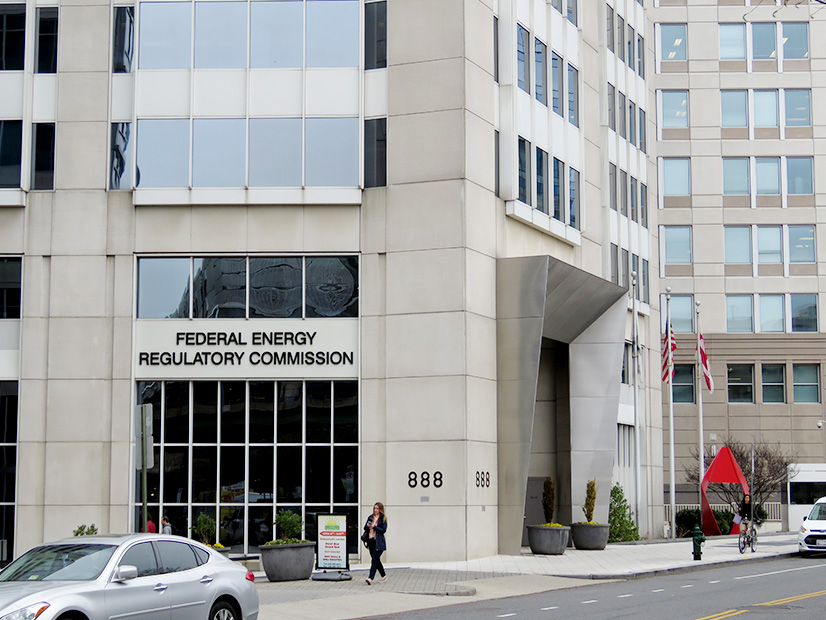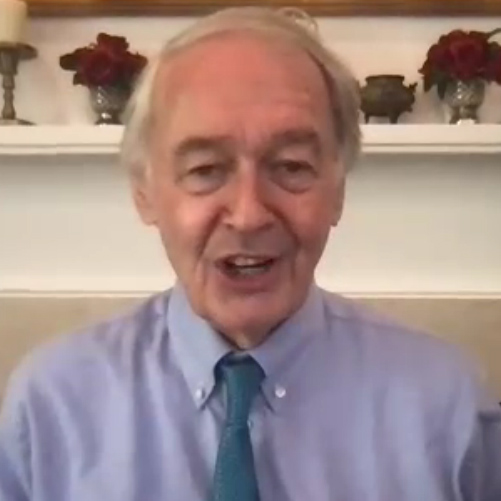FERC has worked to restructure the power industry for nearly three decades, and now it is poised to take another major step forward on that front with the transmission rule next month, panelists said on a webinar April 24 hosted by Americans for a Clean Energy Grid. (See FERC Observers, Stakeholders Lay out What is at Stake with Tx Rule Looming.)
Congress first started opening up the grid with the Public Utility Regulatory Policies Act in 1978, said Sen. Ed Markey (D-Mass.), noting that he supported the law just after being elected to the House of Representatives.
“For the first time, utilities had to buy power from qualifying small generators that were not utilities, but utilities didn’t want to give up ownership of the transmission system,” Markey said. “They didn’t want anyone else to have real access. And we had won a battle on interconnection, but we had not won the war.”
It took more than a decade for Congress to take up the Energy Policy Act of 1992, which included language requiring open access to utilities’ transmission lines that Markey had worked to introduce from his seat on the Energy and Commerce Committee.
“I had to negotiate with the Senate Energy [and Natural Resources Committee] chairman, Sen. Bennett Johnston [D] of Louisiana, who had a utility that was … I’ll put it like this: hesitant to adopt it,” Markey said. “That’s not their natural attitude down there in Louisiana and Arkansas to welcome competition, but it got included. But still, the utilities did successfully limit the scope of open access. So, if a small generator wanted transmission access, they had to file for it.”
At that point, FERC stepped in and issued Order 888 in 1996 that required all utilities under its jurisdiction to have full open access of their transmission systems and led to the restructuring of the wholesale side of the power industry, he added.
“Look, 888 was a huge, great beginning,” said former Commissioner Nora Mead Brownell. “But let’s face it: Monopolies do not go well quietly into the night. So, when we got to FERC, there was the California energy crisis, which we had to solve.”
The 2000-2001 energy crisis involved a lot of litigation and FERC creating the Office of Energy Infrastructure Security, the focus of which was underinvested in by California — making the crisis possible, Brownell said.
FERC always has commissioners appointed by both political parties, and while the commission in the early aughts had plenty of behind-the-scenes debates on specific policies, they were all moving in the same direction to open up the markets, she said. That commission, led by Chair Pat Wood III, approved new RTOs and helped to lay some of the basic rules for their markets out.
Prior to his election to Congress in 2018, Rep. Sean Casten (D-Ill.) worked in the industry developing power plants. He recalled Congress’ and FERC’s work to raise nuclear plant capacity factors and roll out combined cycle plants around the country.
“Why did markets do that?” Casten said. “Well, they did that because regulated utilities are really good at reliability; they are really good at keeping the lights on. They are really bad at innovation and really bad [at] cost planning. That’s not a criticism; the market needs both things.”
Order 888 gave industry participants the ability to make money by deploying cheaper assets for the first time in the power industry’s centurylong history, he added. It also proved to be a win for the environment, as it ensured coal plants would face competition, to which they lost, Casten said.
FERC has been tweaking the rules of markets ever since, but Casten said that so far, it has fallen short of major reforms to curtail market power and get beyond the still-often-fragmented nature of the grid.
“They’ve been really too slow in addressing interregional issues, cost issues [and] the growing interconnect delay on the system,” Casten said. “Those are problems they have the jurisdiction to fix. And we’re out of time for talk; we got to start moving forward.”
Markey also called for further reforms, noting the country needs to double the pace of transmission expansion to fully use the incentives from the Inflation Reduction Act and build even more lines to hit net-zero targets.
Brownell wants to see FERC step up its monitoring abilities so it can get a better handle on market power issues but also be informed about the planning issues, on which it tends to default to the information provided it by the ISO/RTOs.
“I think we could use [the Department of Energy] as a backstop to validate some of the planning assumptions and plans that come out of the RTOs,” Brownell said. “I think the RTOs are doing the best they can under the circumstances. I don’t think we’re rewarding them for the right things, and I don’t think we’re rewarding them for making progress.”




